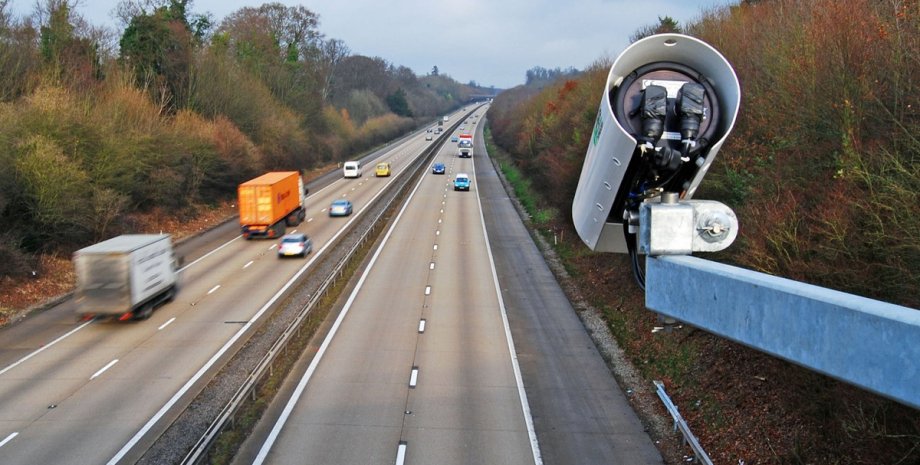Ukraine will control the average speed of cars. And will be punished for exceeding it
24 March 16:07
The Verkhovna Rada is considering the draft Law of Ukraine “On Amendments to the Code of Ukraine on Administrative Offenses and the Law of Ukraine “On Road Traffic” to Strengthen Responsibility in the Field of Road Safety,” which, in particular, provides for the introduction of a new method of measuring vehicle speed. This is reported on the website of the Parliament, "Komersant Ukrainian" informs.
The draft law was developed with the participation of the Ministry of Internal Affairs of Ukraine and the National Police of Ukraine, and if passed, drivers will no longer be able to avoid fines by simply applying the brakes in front of cameras.
How exactly is it planned to record speeding?
It is proposed to determine the average speed of a vehicle based on the distance/time principle and record it between at least two control zones. This is supposed to be done with the help of existing technical means – traffic control devices with photo and video recording functions.
If the average speed of a car between two cameras exceeds the permissible rate, the system will automatically record the violation, regardless of how the driver behaved in front of the cameras.
The corresponding amendment should be made to Article 122 of the Code of Administrative Offenses.
A similar method of automatic speeding detection is used in many countries
Monitoring the average speed of a vehicle has different names in different countries. For example, in the UK, the procedure is called “SPECS”, an abbreviation for “Speed Check Services”. This term refers to a system for monitoring speed limits in traffic that does not measure the speed at a particular point, but the average speed over a longer distance.
In Germany, the so-called “Section Control” system records the license plates of a vehicle at the beginning and end of a certain segment, then calculates the average speed in this area and, in case of speeding, takes a picture for further identification. Speed cameras are installed at several points at a distance of several kilometers (usually from 2 to 5 km) to determine the time when the car reached the corresponding point. The average speed of the car in km/h is then determined based on the time it took the car to get from one checkpoint to the next. If this speed exceeds the maximum permissible speed, a fine is sent to the driver.
In Poland, the system is implemented with the help of two ground control points equipped with cameras. The car is photographed at both the first and second checkpoints, and then identified based on license plates using automatic recognition. The average speed is determined by the time spent traveling between the two checkpoints. If the calculated speed exceeds the maximum speed limit, the data is automatically sent to the police. The system is able to distinguish between cars, trucks, and vehicles with trailers, so it can take into account different maximum speeds.
In addition, similar systems are used in Austria, Switzerland, Italy, and the Netherlands. Especially on routes where accidents occur most often, such as in tunnels or other dangerous road sections, such a system allows drivers to further deter the possibility of violating the established vehicle speed limits.
Punishment is also promised for “wrong” tires
The developers of the draft law “On Amendments to the Code of Ukraine on Administrative Offenses and the Law of Ukraine “On Road Traffic” to Strengthen Responsibility in the Field of Road Safety” also propose to introduce liability for those drivers who ignore deteriorating weather conditions and do not install tires in accordance with seasonality, which directly affects road safety.
As you know, Ukrainian law currently partially regulates the issue of installing tires on a vehicle based on weather conditions. Thus, in accordance with the Traffic Rules, in case of constant operation of a car on roads with slippery roadways, it is recommended to use tires that correspond to the condition of the roadway.
The adoption of the new law will help to raise the level of consciousness of drivers on the road and extend the administrative liability provided for in part one of Article 121 (Violation of the rules for driving or operating a vehicle, rules for using seat belts or motorcycle helmets) of the Code of Administrative Offenses to cases with “wrong” tires.









